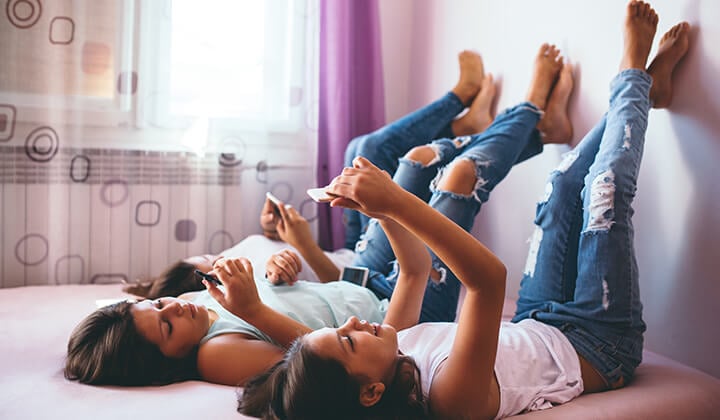
When we hear the word “period,” most women think of the monthly menstrual period. Many of us have grown up associating periods with painful cramping and heavy bleeding, something that we just have to endure. But that’s simply not the case!
There’s a lack of knowledge of what is normal, and an acceptance that all women should anticipate pain and suffering during their cycle. In reality, there are a lot of things that can be done to make periods more tolerable and that starts with helping our daughters understand early on what they can expect.
The 'normal' period
The average girl will begin to menstruate around 12 years of age with periods lasting seven days or less, and the normal cycle is between 26 and 35 days a part. In the first couple of years of menstruation, there may be more variance in days. A normal flow is usually seven days or less, which includes less than four heavy days.
Treating periods
The biggest symptom is pain directly before and during the menstrual cycle. Most mild pain can be treated with over-the-counter pain relievers, such has ibuprofen or naproxen sodium, which should be taken in frequent doses once cramps start, to control the pain. (Taking one Advil isn’t going to help. The pain will only come back. Pain relievers need to be taken consistently.)
In addition, a heating pad placed on the belly or lower back can help provide relief. For some girls, physical activity can also help lessen the pain, so just being aware of the body and reorienting activities can make a difference. If the pain is more severe, a gynecologist may recommend hormonal therapy.
Abnormal periods
Extreme pain and bleeding could be a sign of other reproductive problems or disease and should be treated before becoming symptomatic.
Endometriosis occurs when the lining of the uterus grows in other places such as the fallopian tubes, ovaries or along the pelvis, which causes painful and irregular menstrual cycles. Girls with endometriosis will need ongoing care until at least childbearing age. The sooner the patient receives care, the Better chance we have to prevent long term pelvic pain symptoms.
Bleeding disorders are another concern. If a girl floods overnight, soils clothes, uses dual protection and still soils clothes or changes a pad every four hours she should be screened for a bleeding disorder. Another sign of a bleeding disorder is if the teenager also has nose bleeds or bleeds during dental procedures.
When to see a gynecologist
An individual should see a gynecologist if there’s any concern about pain and/or bleeding. This is not an invasive visit. Most often a physical exam and sometimes imaging will be done, but rarely will an internal genital exam be required to make a diagnosis.
A gynecologist can help determine if periods are normal, provide relief when periods are painful and determine why periods are too close or too far apart. The goal is to help improve the quality of life for girls with normal menstrual problems, and screen for more troublesome disorders to prevent problems from becoming symptomatic and chronic later on.
There are also a number of free apps that can help girls keep track of their periods, so they can easily share frequency, how heavy they bleed and symptoms with their doctor. Period Tracker and Clue Period & Cycle Tracker are apps I recommend and are free.
Learn more about the Pediatric and Adolescent Gynecology program at Children’s Mercy.
Learn more about the 21 Reasons to See a Gynecologist Before Age 21.

